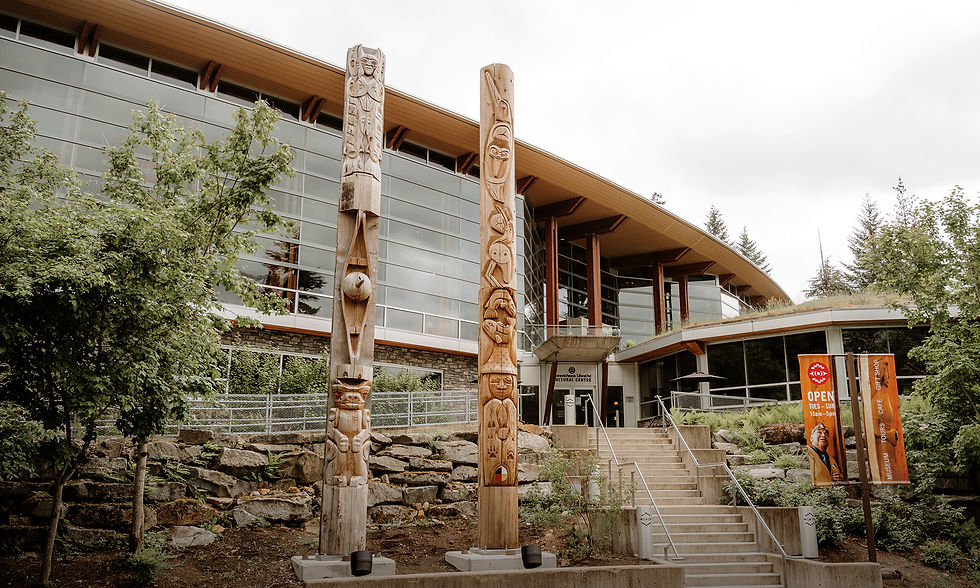New-Build Cities and Sustainable Urban Energy Use: The Case of Zenata Eco-City
- Allison Brown

- Sep 7
- 6 min read

Written by: Allison Brown
Edited by: Sonja Colford
As the world rapidly urbanizes and simultaneously battles the threats of climate change, sustainable urban development has become a critical frontier in the global energy transition. One of the most sought after ways to deal with growing urbanization, economic and social issues, and environmental threats has increasingly become new-build cities. New-build cities are popping up across the globe, appearing in staggeringly high numbers in the Middle East and South-East Asia, and in rising numbers in Africa and South Asia. Zenata Eco-City, located near Casablanca, Morocco, offers a compelling case study on how urban planning can integrate sustainable design, energy efficiency, and low-carbon development into its very fabric. Designed as the first eco-city in Morocco and among the first in Africa, Zenata aims to accommodate 300,000 residents while drastically reducing the environmental impact typically associated with rapid urban expansion.
Zenata Eco-City is a flagship of the Société d’Aménagement Zenata (SAZ), a subsidiary of the Moroccan state investment fund CDG (Caisse de Dépôt et de Gestion). The city spans approximately 1,830 hectares and is strategically positioned between Casablanca and Mohammedia, aiming to alleviate population centralization and resulting strain in the Casablanca metropolitan area (SAZ, 2022). Its development aligns with Morocco’s broader sustainability agenda, including the National Sustainable Development Strategy and National Energy Strategy, which pledges to generate 52% of electricity from renewable sources by 2030 (IEA, 2019).
Zenata was awarded the Eco-City label by the French Ministry of Ecological Transition and has received international recognition for its commitment to sustainable urbanism. The city’s design is anchored in three core pillars that aim to create a sustainable urban environment: social inclusion, economic development, and environmental responsibility (UN-Habitat, 2021). These three pillars are deceptively difficult to promote concurrently; particularly, harmonizing economic development and environmental responsibility in tandem proves especially challenging. The city is attempting to operationalize these principles through innovative land-use planning, low-impact mobility systems, and robust energy efficiency frameworks.
At the heart of Zenata’s approach to sustainability is its urban morphology. The city employs a polycentric design, distributing services and employment hubs across districts to reduce commuting distance. This model reduces reliance on private vehicles and fosters walkability, thereby decreasing transportation energy consumption (SAZ, 2022). Moreover, the street orientation and building density were optimized through bioclimatic design principles in order to leverage natural ventilation and daylighting, significantly lowering energy demand for heating, cooling, and lighting.
One of the key energy-efficient features of Zenata’s layout is its green building standard. The city adheres to Morocco’s thermal regulations by incorporatinb passive architectural techniques, such as solar shading, thermal insulation and high-efficiency glazing in residential and commercial buildings. These design features are critical in Morocco’s hot-summer climate, where air conditioning is a major driver of energy use. A 2020 study conducted by the École Hassania des Travaux Publics estimated that such passive strategies can reduce residential cooling demand by up to 40% annually in Moroccan urban contexts (El Ghazouani et al., 2020).
In addition to individual building efficiency, Zenata implements district-level energy planning. The city plans to utilize centralized systems for water heating and air conditioning, which allows for greater efficiency than decentralized units (UNEP, 2015). The United Nations Environment Programme (UNEP) also found that these proposed district-level energy systems, including the potential future integration of trigeneration, which is combined heating, cooling, and power, offer considerable energy savings by way of economies of scale and system optimization.
Zenata also seeks to reduce its carbon footprint by integrating renewable energy at multiple scales. While Morocco’s grid is already increasingly decarbonized, with large-scale projects like the Noor Ouarzazate solar complex contributing to national renewable energy generation, Zenata emphasizes distributed energy generation within its City boundaries. In order to decarbonize Zenata’s grid, rooftop photovoltaic installations are planned for public buildings, schools, and commercial centers, contributing to local energy resilience and reducing transmission losses (IEA, 2019).
Although large-scale solar farms are not feasible within the limited space available for Zenata itself, the city is designed to facilitate net-metering policies and smart-grid integration, enabling two-way energy flows between users and the grid. During a pilot project in 2021, one of Zenata’s public schools found that rooftop solar panels could cover up to 70% of the schools’ annual electricity consumption, reducing operation costs and emissions for energy use (SAZ, 2022). Net-metering and smart-grid integration encourage residents who both consume and produce electricity to participate actively in the energy system by incentivising them to consider the use of new energy technology, like solar panels.
Wind energy is less directly leveraged within Zenata due to its spatial constraints and location, but Morocco’s growing wind portfolio indirectly benefits the city. With several wind farms located along the Atlantic coast and near the Taza region, wind power contributes to the national mix of energy sources, lowering the country’s overall emissions and intensity of grid electricity (IRENA, 2022). This synergy between national and local energy strategies underscores the importance of systemic thinking in urban energy transitions.
Transportation is a major factor in urban energy consumption and poses a great threat to increasing greenhouse gases (GHG) emissions. Zenata addresses this challenge through an integrated mobility plan privatizing public transit, cycling, and pedestrian pathways. The city is designed with a dedicated bus system and has hopes of connecting to Casablanca’s regional rail network down the line (UN-Habitat, 2021). In theory, this will reduce dependence on private vehicles in order to move through the city.
This model shift is expected to result in significant energy savings. According to the World Bank (2018), transitioning 30% of private vehicle trips to public transit can reduce per capita transportation energy use by 20-30% in high-concentration urban areas. Furthermore, the incorporation of electric buses and charging infrastructure aligns with Morocco’s e-mobility roadmap, further enhancing the sustainability of Zenata’s mobility systems.
Zenata also applies a holistic perspective by addressing the water-energy nexus. The city features a dual-water network that separates potable water from treated wastewater, enabling the reuse of greywater for irrigation and industrial purposes. This approach not only conserves freshwater but also reduces the energy required for pumping and treatment, particularly in a country facing increasing water scarcity due to climate change (UNESCO, 2020). Additionally, Zenata employs green infrastructure, such as permeable pavements and green corridors, to reduce the urban heat island effect. These systems indirectly reduce energy use by mitigating temperature extremes and lowering cooling loads in buildings.
While Zenata has garnered international praise for its sustainable vision, it has not been without critique. One of the most dominant concerns is related to the premature commercialization of its urban development model and its self-promotional framework. A central concern among urban planning scholars and civil society actors is that Zenata has begun promoting and selling its planning blueprint and proprietary evaluation systems before the city has even been fully built or inhabited.
SAZ has actively marketed Zenata’s model to international stakeholders, with a heavy focus on other African countries, as a replicable template for eco-city development that is tailored to Global South development. Central to this effort is the Zenata “Eco-City Label”, a self-designed evaluation system intended to benchmark the city’s sustainability across energy, mobility, water, and social inclusion. The label's promotional use in SAZ marketing materials has raised concerns about transparency and accountability, particularly given that much of Zenata’s infrastructure remains under construction (Barthel & Panel, 2021). With many core districts in Zenata remaining unoccupied or only partially operational, there remains uncertainty as to how the sustainability claims made by the city will play out in real-world conditions with a full residential population. Exporting this model prematurely can lead to greenwashing where Morocco rakes in profits based on perceived environmental benefits, without those benefits properly coming to fruition (Caprotti et al., 2017). This threat remains especially salient if other cities adopt Zenata’s approach without critical adaptations to local contexts.
Zenata Eco-City represents both the promise and the complexity of sustainable urban development in the Global South. As an ambitious and forward-thinking project, it weaves together energy efficiency, renewable integration, low-carbon mobility, and resource-conscious design into cohesive urban fabric. With that being said, Zenata also faces looming issues with over-commercialization of urban sustainability that occurs when the plans are marketed prior to full realization. The city’s premature promotion and proprietary labelling raise valid concerns about transparency, scalability, and the potential for greenwashing. Ultimately, Zenata offers a valuable case for sustainable urbanism, but only if its strategies are evaluated critically, adapted thoughtfully, and grounded in measurable impact rather than aspirational branding.
_________________________________________________________________
References:
Barthel, P., & Planel, S. (2021). Zenata, une éco-cité en chantier: Circulation de modèles et urbanisme entrepreneurial au Maroc. Métropolitiques. https://metropolitiques.eu/Zenata-une-eco-cite-en-chantier.html
Caprotti, F., Cowley, R., Datta, A., Broto, V. C., Gao, E., Herrick, C., & Joss, S. (2017). The New Urban Agenda? A critique of smart and sustainable cities. Dialogues in Human Geography, 7(1), 23–42. https://doi.org/10.1177/2043820617691844
El Ghazouani, M., Boujnah, M., & El Khamlichi, H. (2020). "Impact of passive design strategies on energy performance of residential buildings in Morocco." Journal of Building Performance, 11(2), 95–104.
IEA. (2019). Morocco 2019: Energy Policy Review. International Energy Agency. https://www.iea.org/reports/morocco-2019
IRENA. (2022). Renewable Energy Market Analysis: Middle East and North Africa. International Renewable Energy Agency. https://www.irena.org
SAZ. (2022). Zenata Eco-City: Urban Planning and Sustainability Strategy. Société d’Aménagement Zenata. https://www.zenataecocity.ma
UNEP. (2015). District Energy in Cities: Unlocking the Potential of Energy Efficiency and Renewable Energy. United Nations Environment Programme.
UNESCO. (2020). Water and Climate Change. United Nations Educational, Scientific and Cultural Organization. https://unesdoc.unesco.org/ark:/48223/pf0000372985
UN-Habitat. (2021). Zenata: Sustainable Urban Planning for a New Moroccan City. United Nations Human Settlements Programme. https://unhabitat.org
World Bank. (2018). Mobility and Accessibility in African Cities. World Bank Publications.




Comments